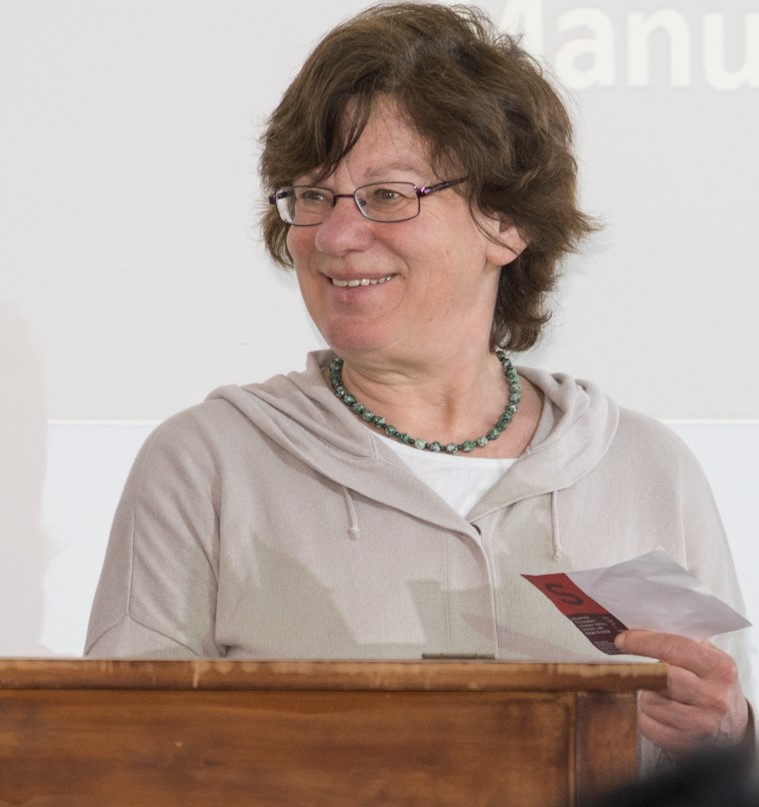The WageIndicator, Pauline Osse, the WageIndicator Foundation and all the teams in the participating countries celebrate 20 years of successful activities around the globe. The Glabor Labor Organization (GLO), affiliated with WageIndicator, takes this opportunity to congratulate a great institution that has contributed to global transparency, understanding and well-being. In an interview with GLO, the Director has answered a few questions about the organization, vision and work of WageIndicator.
The Interview

Director Pauline Osse has been a journalist for all her life. She worked for various magazines, the Dutch trade union and as a freelancer before she created the WageIndicator movement.
Now, the WageIndicator Foundation is a global player producing an international trademark.
In 2017, Pauline Osse and her organization were supporters of the newly created Global Labor Organization (GLO) from the first hour.
GLO: To collect wage microdata through the internet was quite innovative two decades ago. What was the origin of your initiative?
The first trigger was the insight that working people everywhere lacked access to adequate wage information. This became clear to me back in 1999 when I set up the website for the Dutch trade unions. People wanted to know ‘what should I earn, what can I ask, what is the going market rate for someone like me, trucker, cleaning lady?’ And the unions could not give that information. What the Collective Agreement said, yes, maybe, but not the real wage the market would pay. For the real wages one needed large scale research. And nobody did this for a lower level then CEO’s.
The second trigger was a small benchmark tool available online at the time for the Dutch highly educated white male employee. But what about me, a working women? And what about all the other working women, taking care for our children, houses, family? Why only information for the rich and highly educated? What about vulnerable groups at the lower end of the labor market? And indeed, what about labor markets in poorer countries? Why wasn’t there such a benchmark tool for everyone?
So I got in touch with Kea Tijdens, a specialist in gender studies at the University of Amsterdam and we sat together. Kea is great at designing surveys and knows how to structure data sets and handle microdata. I knew a bit about the internet already. We put 2 and 2 together and came up with our first online survey. It was 2000, the internet was still young. But it worked. The data we collected was enough to build a salary check, reflecting the real wages for specific occupations. We put our salary check online as a benchmark on a dedicated website and promoted it. This worked too. Ever since we have been refining and extending the salary check, the occupations covered, and the number of national websites. After 20 years – and over 100 countries – the salary check is still very much at the core of our activities.
GLO: You are about to become a truly global player. What brought the breakthrough and what are the major products?
We did not stop at collecting microdata on real wages and – later – cost of living. Our websites today have much more to offer than just microdata. We offer statutory minimum wages, we have living wages for countries and regions within, we have a full text – and coded Collective Agreement-database and sample Collective Agreements to draw on, we have built and keep extending a country specific labor law database with tailor-made information on social security and the like, now covering 100 countries. Every step, every extension has been a response to what our web visitors told us they needed. The pressing problems of people we met in the field while doing offline research were also key in directing our work.
Our work essentially is piecemeal engineering, really. So it is difficult to pinpoint breakthroughs. But, as I remember it, a few moments stand out. Take for instance our first extension abroad. In 2004 we rolled out national WageIndicator websites in 9 European countries. All had a salary check, our prime product. That first extension abroad may be called a breakthrough: our idea worked there too!
By then we had already decided that every next step, every extension should be designed and constructed in such a way that all data was internally consistent and compatible. Right from the start every tool we use has been of our own making to make sure that all data and all information we elaborate adds up and is internationally comparable. All data is coded, all clauses are annotated. As a result of this early decision, today, as we speak, we run similar operations in over 100 countries. And we hope to serve people in 150 countries in 2020.
I also remember vividly Paraguay 2006. We met trade union members there, very poor people, and explained what we were doing. Their reaction was: what is this talk about minimum wage, maximum wage. The maximum here is the minimum wage, if we get it at all. And we don’t even know what the minimum is! If there ever was an eye opener, it was this one. So we started our collection of minimum wages and we started it in India, with its highly complex patchwork of minimum wages. Today, as a result, we offer the largest minimum wage database in the world within easy reach of everyone, anywhere, including Paraguay. On average each month 50,000 people consult our website there: in Paraguay alone! And a majority visit the minimum wage page first.
Around 2010 it became clear that living wage data was in great demand too. But how to come by living wages? What is a living wage? I thought that the best reference would have been the wages from Collective Agreements. If anything, that wage level should be enough to guarantee a decent living. If one supposed that the legal minimum wage was too low, then one might use the Collective Agreement-wages as a benchmark to eventually arrive at living wages. We should therefore offer a simple negotiating tool, based on existing Collective Agreements. This internal discussion resulted in two databases that we added to our salary check, minimum wages and labor law database: a living wage concept of our own design and a Collective Agreement-database from which we derive sample Collective Agreements.
Which brings me to our Decent Work Check. It is based on labor law and has been inspired by people’s pressing needs. During 2007 and 2008 in a dozen or so countries in Latin America, East and West Africa we organized fact finding sessions in remote rural areas. In order to structure the debate we handed out a small questionnaire. It took participants a few minutes to fill out by ticking multiple choice boxes. The answers added up to a score. This score told them right away where they stood in terms of compliance with working conditions as in their national labor law. Ten years later this tried and tested tool has been used to create a factory-level survey for both Indonesia and Ethiopia, where it has been applied to conduct face-to-face interviews with workers and hr-staff in the garment sector. After consultation with factory owners the compliance-with-the-law-results are published as factory pages on our national websites in those two countries. The factory pages are seen as so called Worker Driven Social Responsibility.
GLO: Nowadays, WageIndicator is a trademark. But it is not protected, so how do you survive?
Well, I don’t know about the trademark, I couldn’t tell. But in Holland, after 20 years, we surely are a household-name. And we know that our data is widely drawn upon and used by policy makers, many small employers, multinationals, journalists and academics. Even after 20 years, we stick to our policy of putting all our data online as soon as we have double checked that it is accurate, factual and up to date. We just have to offer more than others, be faster, better and transparent.
We always try to come up with creative answers to people’s questions, even like: if you can do this, can you also do that? Such questions also come from governments and multinationals, but these don’t pay always. They simply assume that the data we publish is for free, since it is published. Doing projects together is one way to raise income. Selling data another.
GLO: Your venture has limited funds. So one does not get rich working for WageIndicator. How do you keep the spirit alive?
We want our data to reach as many people as possible. We are motivated by the urge to liberate the ordinary working women and men through empowerment by providing them with clear cut information that helps them in taking their own decisions. To never take no for an answer. So that they no longer depend on their parents, the trade union, the government or any other authority to tell them what is possible and what not.
This questioning reflex surely comes from journalism, my trade. Why don’t workers automatically get the information from the Collective Agreements concluded on their behalf, why do we have to unearth legal minimum wage information and decipher labor law? Why is is not made accessible in understandable language in the first place? This information belongs to the people, by definition. It is unfair to keep it from them. The way we present it makes them say: ah, now I understand what is in the law for me, finally. And: I feel respected, thank you for that. This certainly motivates our team.
We are an internet-based micro multinational. Our team spirit is highly entrepreneurial. We are builders. The gender angle that has been with us from the beginning is reflected in the composition of our global team. Most have children. We make our own creative flow. If we have the money, we invest in improvement and extension. If we have less money we continue building and updating anyhow. You can also look at us as a family enterprise. Even when some cherished team members leave us, because of an attractive job offer elsewhere, they keep in touch with the family, and continue with us by offering coaching and mentorship for free, for ever. They stay with us in the same spirit. We are all about diversity and inclusion. And the fact that in our daily work we do something meaningful to liberate simple working people by giving them the information they need, is a binding force as well.
GLO: What next innovations may we expect?
Perfect websites, perfect databases in 150 countries, many countries with good Collective Agreement databases, factory pages giving overviews of compliance with the labor law. And a platform with social protection tools for the platform workers.
The interviewer from GLO has been Klaus F. Zimmermann.
The Scientific coordinator of WageIndicator is GLO Fellow Kea Tijdens.



Ends;

